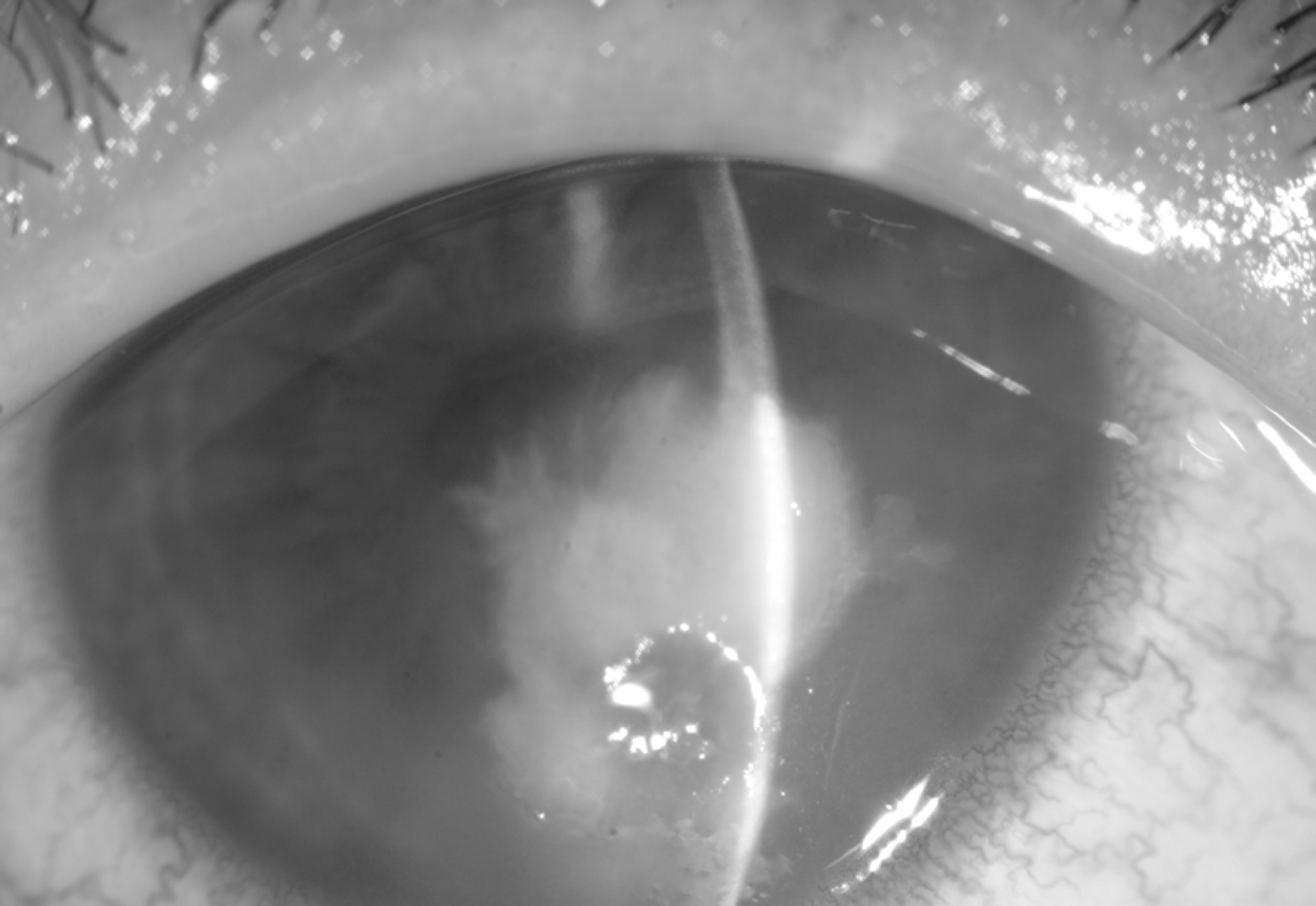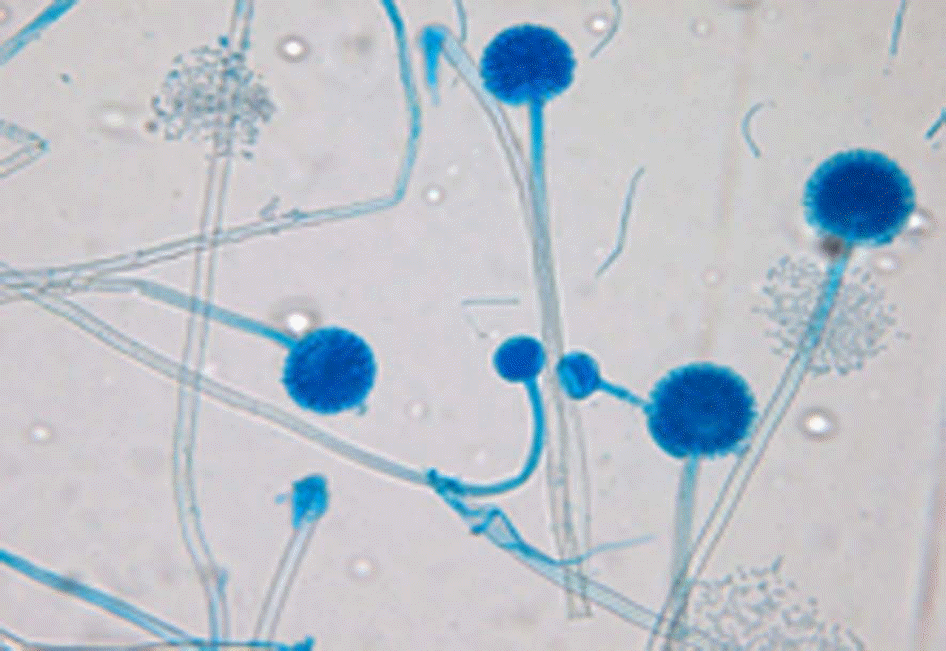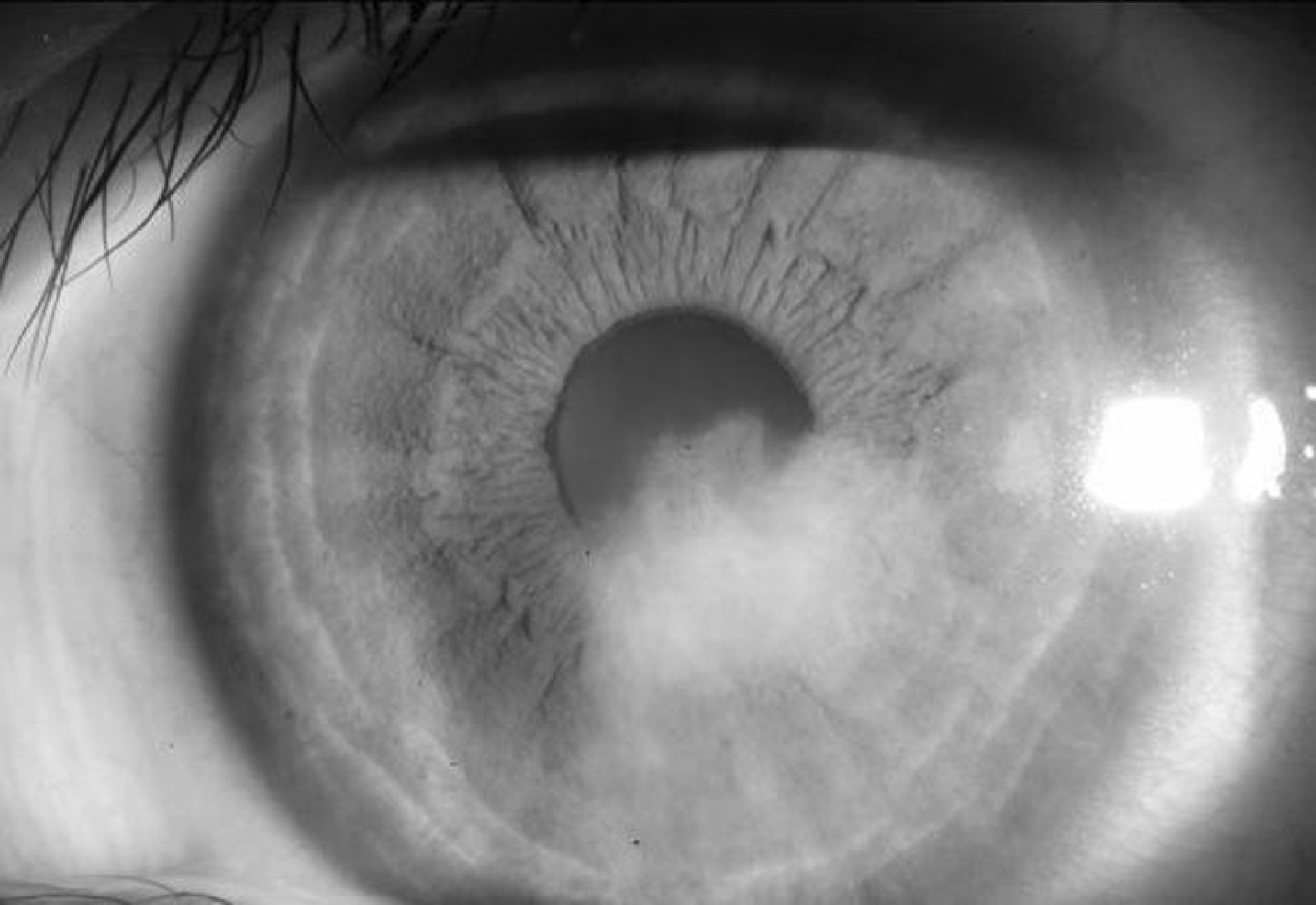Abstract
Purpose
To present a case report of fungal keratitis related to prolonged overnight use of orthokeratology contact lenses.
Methods
A 13 year-old girl presented with a corneal ulcer in her left eye refractory to antibacterial medication. She had a history of wearing orthokeratology contact lenses overnight for seven months.
Go to : 
References
1. Wilson DR, Keeney AH. Corrective measures of myopia. Surv Ophthalmol. 1962; 34:294–304.
2. Alhharbi A, Swarbrick H. The effects of overnight orthokeratology lens wear on corneal thickness. Invest Ophthalmol Vis Sci. 2003; 44:2518–23.
4. Berstein HN. Fungal growth into a Bionite hydrophilic contact lens. Ann Ophthalmol. 1973; 5:317–22.
5. Xuguang S, Huiying Zhao, Shijing Deng, et al. Infectious keratitis related to orthokeratology. Ophthal Physiol Opt. 2006; 26:133–6.
7. Lee YB, Tchah H. A case of microbial keratitis as a complication of orthokeratology contact lens wear. J Korean Ophthalmol Soc. 1999; 40:1401–4.
8. Xuguang S, Lin C, Yan Z, et al. Acanthamoeba keratitis as a complication of orthokeratology. Am J Ophthalmol. 2003; 136:1151–9.

9. Roth HW. The etiology of ocular irritation in soft lens wearers; distribution in a large clinical sample. Contact Intraocular Lens Med J. 1978; 4:38–47.
10. Eriken SP. Hydrophilic soft lens sterility and disinfection. In : Ruben M, editor. Soft Contact Lenses : Clinical and Applied Technology. 1st ed.New York: Wiley;1978. chap. 5.
11. Wilson LA, Ahearn DG. Association of fungi with extended-wear soft lenses. Am J Ophthalmol. 1986; 101:434–6.
13. Lau LI, Wu CC, Lee SM, et al. Pseudomonas corneal ulcer related to overnight orthokeratology. Cornea. 2003; 22:262–4.

Go to : 
 | Figure 1.Slitlamp view of patient's left eye shows squareshaped, 3.5×3.5 mm sized irregular corneal infiltration which is located slightly inferior to the corneal center. |




 PDF
PDF ePub
ePub Citation
Citation Print
Print




 XML Download
XML Download